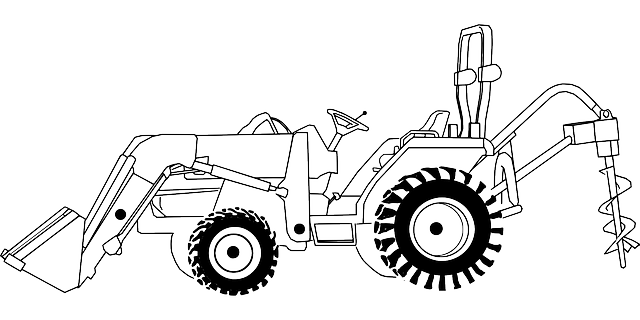When you notice your lawn tractor's headlights or dashboard lights dimming or the engine cranking sluggishly, especially upon start-up, these may be signs that your lawn tractor battery is weakening. Such symptoms indicate the battery is losing its ability to hold a charge and maintain consistent voltage, which can affect performance, visibility, and safety. Regularly check your battery's voltage with a multimeter; a reading below 12.6 volts after charging suggests it may be time for a replacement. Additionally, watch out for corrosion on the terminal connections, which can disrupt electrical flow and also lead to poor performance. Environmental factors like temperature extremes, humidity, and exposure to moisture can degrade your lawn tractor battery over time, so consistent maintenance, including cleaning corroded terminals and storing the tractor in a controlled environment, is crucial for its longevity. Regular monitoring of the battery's voltage and condition, along with prompt attention when issues are detected, will help ensure your lawn tractor operates reliably and efficiently, preventing unexpected failures and reducing the need for premature replacements. Keeping your lawn tractor battery in good shape is essential for maintaining the health and aesthetics of both residential and commercial landscapes.
When your lawn tractor’s engine cranks sluggishly or its lights dim, it may be more than just a rough morning—it could signal your lawn tractor battery’s declining health. This article outlines three clear indicators that your battery is on the fritz, from performance dips to power struggles. We’ll explore various factors influencing this common issue, including corrosion, age, usage patterns, and temperature extremes, providing valuable insights for maintaining optimal battery function. Understanding these signs can help you act promptly to prevent premature failure of your lawn tractor battery and ensure a smooth operation for all your gardening tasks.
- Identifying the First Sign: Sluggish Engine Cranking
- The Second Indicator: Dimmed Headlights or Dashboard Lights
- Recognizing the Third Red Flag: Struggling to Reach Full Power
- Battery Voltage Readings Below Expectations
- The Role of Corrosion on Terminal Connections
- Examining the Age and Usage Patterns of Your Lawn Tractor Battery
- Understanding the Impact of Temperature Extremes on Battery Performance
- The Importance of Regular Maintenance Checks to Prevent Premature Battery Failure
Identifying the First Sign: Sluggish Engine Cranking

The Second Indicator: Dimmed Headlights or Dashboard Lights

When your lawn tractor battery is on the verge of failing, it may manifest subtle symptoms that are indicative of its diminishing capacity. One such indicator is when the headlights or dashboard lights appear dimmer than usual. This phenomenon occurs because a weak battery can struggle to supply sufficient voltage to the lighting systems. Typically, a fully charged lawn tractor battery should illuminate the lights with a bright, steady glow. As the battery’s charge depletes, the intensity of this light output gradually diminishes. If you notice that your dashboard lights are fading or that your headlights aren’t as bright as they used to be, especially when you first start the tractor, it’s a sign that the battery’s internal cells are losing their ability to hold a charge effectively. This issue can lead to poor performance and eventually leave you stranded with lights that are too weak to provide adequate visibility, which is not only a safety concern but also a signal that it’s time to address your lawn trctor battery. Regularly inspecting the brightness of these lights can help you catch this early sign of battery failure, prompting you to take action before the problem escalates and leaves you in the dark, quite literally.
Recognizing the Third Red Flag: Struggling to Reach Full Power

When your lawn tractor fails to reach full power, it’s a clear indication that your lawn tractor battery may be on its last legs. This issue often manifests as a decrease in performance when tackling slopes or heavy workloads. The battery, which is the heart of your lawn tractor’s electrical system, provides the necessary voltage and amperage to operate all electrical components, including the starter motor. If you notice that your tractor is struggling to crank or is performing sluggishly, it could be a sign that the battery’s capacity to hold a charge is diminishing. This is not just a matter of inconvenience; it can also affect the efficiency and effectiveness of your lawn maintenance tasks. To address this, regularly test the battery’s voltage with a multimeter after it has been charged. A fully charged battery should read at least 12.6 volts. If the reading is consistently below this mark, it’s time to consider replacing your lawn tractor battery to restore full power and ensure optimal performance for your yard work. Remember, a weak battery can lead to incomplete tasks and additional wear on your tractor’s motor, so addressing this red flag promptly is crucial for the longevity of both your battery and your equipment.
Battery Voltage Readings Below Expectations

If your lawn tractor isn’t performing as it used to, there’s a chance that its battery is on its last legs. One clear indicator of a failing lawn tractor battery is when the voltage readings fall below expectations. Typically, a healthy lawn tractor battery should deliver 12.6 volts when fully charged. If you notice your meter reading less than this, it’s a sign that the battery’s capacity to hold a charge is diminishing. This drop in voltage can manifest as a reduction in power or an inability to start the engine, which can be particularly frustrating when you’re in the middle of a large yard task. It’s crucial to regularly check the battery voltage using a reliable voltmeter or multimeter. By doing so, you can catch this issue early on and address it before it leads to more significant problems, such as straining the alternator or damaging electrical components of your lawn tractor. Monitoring the voltage is a straightforward yet effective way to assess the health of your lawn tractor battery and ensure that your equipment continues to operate efficiently.
The Role of Corrosion on Terminal Connections

When your lawn tractor fails to start or struggles to maintain power, it may be a sign that the battery is on its way out. One significant factor contributing to this decline in performance is corrosion on terminal connections. Over time, the metal parts of these connections, such as the terminals and cables, can react with substances in the environment, like moisture and oxygen, forming a layer of corrosion. This corrosion, often appearing as a white or greenish crust, can interrupt the electrical flow between the battery and the tractor’s electrical system. As the integrity of the connections is compromised, the efficiency of the electric current is reduced, leading to a weakened battery performance. Regularly inspecting and cleaning these terminals can mitigate corrosion and extend the life of your lawn tractor battery. A visual examination for signs of white or greenish buildup should be part of routine maintenance. If detected, gently cleaning the terminals with a baking soda paste or a dedicated battery cleaner can remove the corrosion and restore proper conductivity, which is crucial for ensuring your lawn tractor operates as intended.
Examining the Age and Usage Patterns of Your Lawn Tractor Battery

When assessing whether your lawn tractor’s battery is on the verge of failure, one critical factor to consider is its age and the frequency of its use. Typically, a lawn tractor battery has an expected lifespan, which can range from three to five years under standard conditions. However, factors such as climate, usage patterns, and maintenance practices can significantly influence this timeline. If you’ve been using your lawn tractor frequently throughout the year, especially in regions with harsh winters or sweltering summers, it’s likely that your battery will approach the end of its service life more rapidly. To ensure optimal performance, regularly inspect your battery for signs of wear and tear, such as corrosion on terminals or a decrease in power output. Pay attention to how often you need to recharge or jump-start your tractor; an increasing frequency may indicate a weakening battery. Keeping detailed records of your lawn tractor’s usage and maintenance can help you pinpoint when the battery begins to show signs of decline, allowing for timely replacement and minimizing disruptions to your lawn care routine. Regular upkeep and monitoring will not only extend the life of your lawn tractor battery but also ensure that it operates at peak efficiency when you need it most.
Understanding the Impact of Temperature Extremes on Battery Performance

Lawn tractors are indispensable tools for maintaining the health and appearance of residential and commercial landscapes. A key component that affects their performance is the battery, which powers various functions including starting the engine and operating electrical attachments. Understanding the impact of temperature extremes on battery performance is crucial for the sustained use of lawn tractors. Extreme cold can solidify the lead-acid in the battery, slowing down or halting the chemical reactions necessary for energy release, which can make it difficult to start the tractor. Conversely, high temperatures can cause the battery to overcharge, leading to internal gas buildup and a reduced lifespan. This thermally induced stress can impair the battery’s ability to hold a charge, ultimately leading to failure. To mitigate these effects, regular maintenance such as keeping the battery clean, ensuring proper connections, and storing the tractor in a temperature-controlled environment when not in use is recommended. Additionally, using a battery charger or maintainer designed for lawn tractor batteries can help maintain optimal performance throughout the year. By being mindful of these environmental factors and taking proactive steps to protect the battery, you can ensure that your lawn tractor operates efficiently and reliably.
The Importance of Regular Maintenance Checks to Prevent Premature Battery Failure

Regular maintenance checks are pivotal for prolonging the lifespan of your lawn tractor battery. Over time, environmental factors such as temperature extremes and exposure to moisture can diminish battery performance. By conducting routine inspections, you can identify potential issues before they lead to premature battery failure. For instance, ensuring the connections are clean, tight, and corrosion-free is a simple yet effective step that can prevent electrical loss. Additionally, regularly charging the battery after use and storing it in a cool, dry place during off-seasons can protect against degradation. Monitoring the battery’s voltage levels and electrolyte concentration, as well as checking for any signs of leaks or cracks in the casing, are proactive measures that contribute to maintaining optimal battery health. Regular maintenance not only ensures consistent performance but also saves time and money by avoiding unexpected breakdowns and costly replacements. Taking these preventative steps with your lawn tractor battery is akin to safeguarding its longevity, ensuring it remains reliable for all your gardening tasks.
When your lawn tractor battery starts showing signs of distress, it’s crucial to address these promptly to maintain your yard work’s efficiency. Sluggish engine cranking, dimmed headlights or dashboard lights, and struggling to reach full power are clear indicators that your lawn tractor battery may be on its last legs. Additionally, voltage readings below expectations, corrosion on terminal connections, and the effects of extreme temperatures can all point to a failing battery. Regular maintenance checks are key to preventing premature failure and ensuring your lawn tractor remains a reliable companion in your outdoor endeavors. Remember to stay vigilant and proactive with your lawn tractor battery upkeep to keep your equipment running smoothly.
